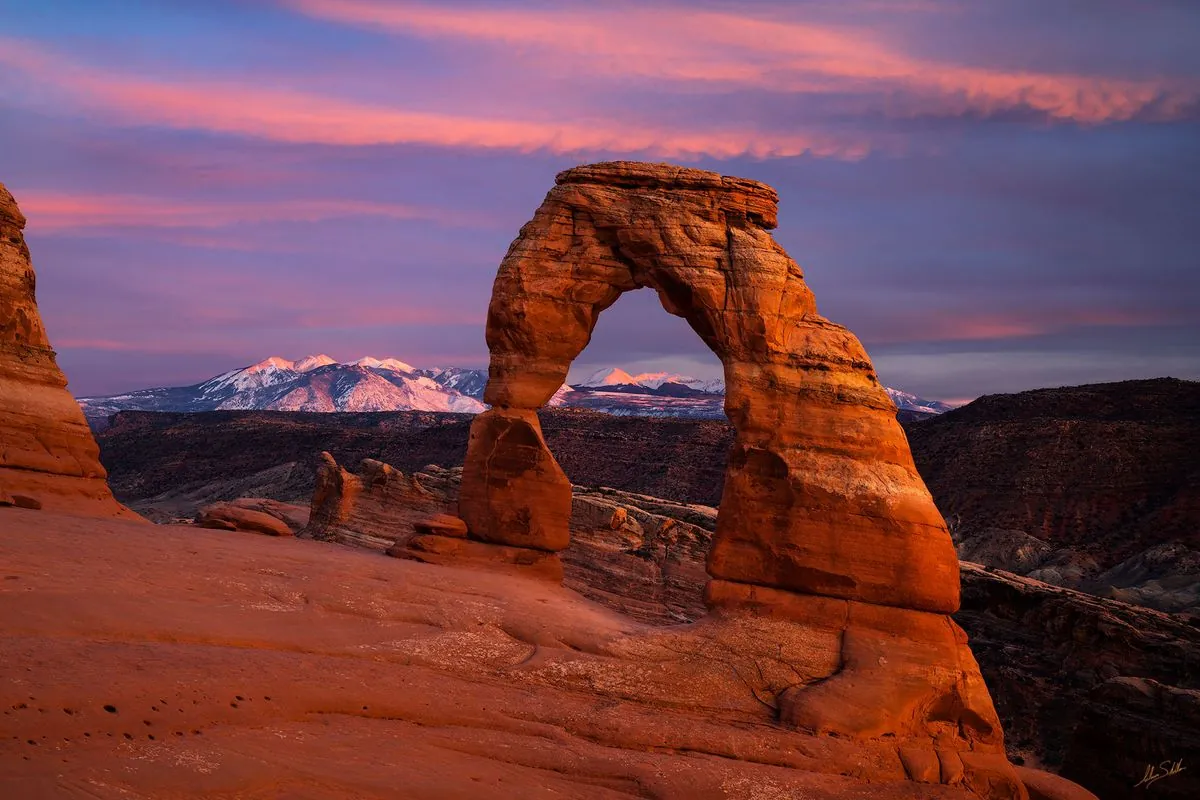The recent collapse of the "Toilet Bowl" arch at Lake Powell has sparked concern among visitors to Utah's Arches National Park about the stability of its iconic formations. This event has brought attention to the delicate balance between preserving natural wonders and allowing natural processes to unfold.
Karen Garthwait, spokesperson for Arches and Canyonlands national parks, clarified the National Park Service's stance: "Our mission is not to freeze time and preserve these structures exactly as they are. Our mission is to preserve the natural processes that create these structures, which of course, is the same process that will eventually undo them as well."
Arches National Park, established as a national monument in 1929 and designated as a national park in 1971, is home to over 2,000 natural stone arches. These geological marvels, formed over millions of years through erosion, are part of a dynamic landscape that continues to evolve.
Human activity has significantly impacted the erosion rate of these arches over the past century. Jeff Moore, a geology and geophysics professor at the University of Utah, explains that subtle changes can make a significant difference in arch stability. His research focuses on measuring seismic activity beneath Utah's arches and assessing their structural health using civil engineering principles.
Moore's studies have revealed that human-made energy sources, such as trains, trucks, and helicopters, are increasing vibrations in the arches, accelerating crack growth and potentially shortening their lifespan. This research has led to practical measures, such as the Federal Aviation Administration imposing air restrictions near Utah's Rainbow Bridge National Monument to mitigate vibration-induced damage.
The National Park Service has implemented strict policies to limit human impact on these natural structures. In the past two decades, regulations have evolved from allowing visitors to walk on and hang from arches to prohibiting such activities. The 2006 update to park regulations explicitly banned climbing on arches after an incident involving Delicate Arch, the park's most recognizable formation standing at 52 feet tall.
"It's like losing an old friend. I'm sad to see them go, but I'm hurt more by the arches that collapsed that I never saw in person. We don't know how long they're going to last, so you have to go appreciate them."
Beckman's sentiment reflects the growing urgency to appreciate these natural wonders while they still stand. Arches National Park, covering 76,679 acres and featuring over 15 hiking trails, offers visitors ample opportunities to experience these geological marvels firsthand.
As we contemplate the future of Utah's arches, it's crucial to remember that these formations are part of a larger geological context. The park is situated within the Colorado Plateau, a vast region spanning four states, and its diverse landscape includes features like Balanced Rock, standing at 128 feet tall, and Landscape Arch, the longest arch in North America at 306 feet.
While the collapse of arches is a natural process, the accelerated erosion due to human activity serves as a reminder of our responsibility to minimize our impact on these irreplaceable natural wonders. As we continue to study and appreciate Utah's arches, we must balance our desire to experience them with the need to preserve the natural processes that have shaped them over millions of years.
